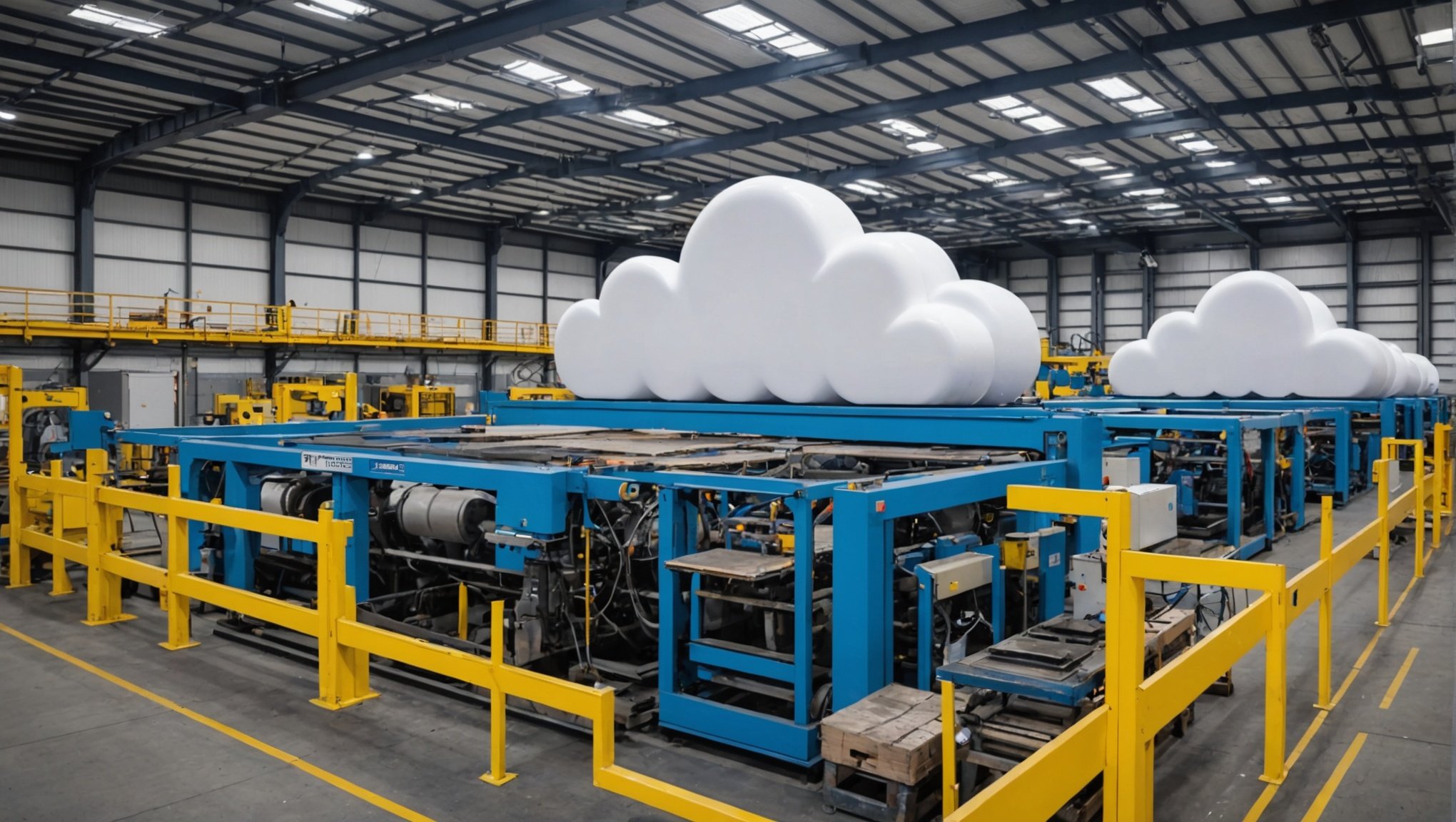Understanding Cloud ERP Systems
The Manufacturing Sector has significantly benefited from the integration of Cloud ERP systems, especially for Birmingham Enterprises looking to optimise operations. Cloud ERP stands for Enterprise Resource Planning that is hosted on a cloud platform, providing businesses flexibility and scalability.
Cloud ERP systems are crucial because they foster real-time data access and process automation, enhancing decision-making. This is particularly relevant for manufacturers in Birmingham, where efficiency is key to maintaining competitive advantage. The ability to manage inventory, supply chain, and production schedules from a cloud-based solution allows for a seamless flow of information across departments.
This might interest you : Top Strategies for Effectively Leading a Remote Sales Team in UK E-commerce
Key benefits for Birmingham enterprises include cost-effectiveness, as cloud-based solutions eliminate the need for expensive hardware. They also offer enhanced collaboration tools, which are essential for coordinating complex tasks within the Manufacturing Sector. Furthermore, these systems are updated automatically, ensuring that companies always have access to the latest features without disruptive installation processes.
In contrast to on-premise ERP solutions, cloud-based systems require minimal IT support and reduce the time needed to implement changes. This agility is crucial for Birmingham manufacturers aiming to adapt quickly to market changes and technological advancements.
In the same genre : Top Strategies for Effectively Adopting a Cybersecurity Framework in UK Tech Firms
Key Factors in Selecting a Vendor
Selecting the right ERP vendor for manufacturing requires careful evaluation of specific criteria. The primary factor to consider is how well the vendor can cater to the unique needs of the manufacturing industry. Industry expertise is critical as it ensures the vendor understands the complexities and demands of manufacturing processes, offering solutions that align with those needs.
Criteria for Evaluating Cloud ERP Vendors Specific to Manufacturing
When evaluating vendors, consider factors such as scalability, customizability, and integration capabilities with existing systems. Scalability ensures the ERP can grow with your business, adapting to increasing workloads. Customizability allows tailoring of the software to suit particular processes and requirements. Furthermore, seamless integration ensures the ERP works smoothly with other tools, reducing disruptions.
Importance of Industry Expertise in Vendor Selection
ERP vendors with significant manufacturing experience bring invaluable insights and solutions suited to address industry-specific challenges. This expertise not only facilitates smoother implementation but also drives enhanced efficiency and productivity, making it a critical component in the vendor selection process.
Comparison of Popular Cloud ERP Solutions for Manufacturing
Different cloud ERP solutions offer varied strengths. For instance, some vendors might excel in inventory management, while others shine in supply chain optimization. Evaluating each option against your specific requirements helps identify the most suitable solution, ensuring a successful deployment and operation.
Data Migration Strategies
When undertaking cloud ERP implementation, ensuring data integrity is paramount. A successful migration begins with a sound strategy focused on the best practices for data migration. This process starts by thoroughly auditing and cleansing existing datasets to uphold data accuracy. Implementing tools that automatically flag discrepancies can mitigate issues before they escalate.
Adopting robust methodologies, such as the ETL (Extract, Transform, Load) process, helps maintain data integrity. Here’s an approach to streamline this:
- Extract: Gather accurate data from source systems, ensuring no duplication or omission.
- Transform: Reformat data to match the cloud ERP specifications, improving consistency.
- Load: Import data into the new ERP, confirming alignment with the existing business needs.
To further enhance cloud ERP implementation, leveraging advanced technologies like data integration platforms ensures smoother transitions. These platforms automate repetitive tasks, reducing the likelihood of human error. Additionally, employing AI tools to predict potential data conflicts can save time and resources.
The intricacies of data migration processes can be daunting, but with proper planning and the right technology stack, organisations can ensure data accuracy and integrity, achieving seamless transitions to their new systems.
Employee Training and Change Management
Navigating the complexities of enterprise resource planning (ERP) implementation requires comprehensive employee training and strategic change management. Developing an effective training program for employees is essential. It needs to be tailored to address various skill levels, ensuring each team member knows how to utilise the new system effectively. Regular workshops and hands-on sessions provide practical experience, fostering confidence and familiarity with the ERP environment.
However, training alone isn’t enough. Successful user adoption hinges on adept change management strategies. Organizations should engage stakeholders early, clearly communicating the transformation goals and the benefits of new processes. Maintaining open channels of communication alleviates concerns and encourages positive engagement from employees.
Creating a culture of adaptability and learning is another cornerstone of successful ERP implementation. Encouraging continuous education helps employees remain agile, equipping them to handle future changes. Recognising adaptable behaviour and rewarding learning efforts reinforce these values, ensuring that they become core aspects of the organizational culture.
For a holistic approach to ERP implementation, combining these elements ensures a smooth transition and maximises the system’s potential value to the organization.
Integration with Existing Systems
The successful integration of cloud ERP solutions with existing systems, like legacy ones, is critical for seamless operation. However, it often presents significant challenges. Legacy systems may have outdated technologies that aren’t easily compatible with modern ERP applications, raising concerns about system integration. Overcoming these barriers requires careful planning and the use of specialized tools.
One effective method is employing middleware solutions to bridge gaps between new cloud ERP systems and legacy infrastructure. Middleware acts as a communicator between distinct systems, ensuring they work together harmoniously. Standardized data exchange formats, such as XML and JSON, are also vital for assisting in seamless IT infrastructure integration.
Moreover, ERP solutions that offer ERP compatibility can simplify this process, reducing the time and resources needed. The benefits of achieving a unified IT infrastructure are substantial, especially for manufacturing operations. Such an infrastructure can enhance data visibility across departments, streamline operations, and improve decision-making.
Ultimately, as manufacturers increasingly rely on interconnected systems, a well-integrated cloud ERP system becomes essential for optimizing performance and maintaining competitiveness in the market.
Addressing Common Implementation Challenges
Deploying a cloud ERP system can revolutionise operations, but only if you bypass typical implementation challenges. Firstly, overlooking the importance of comprehensive staff training often leads to underutilisation of new systems. A raw example is XYZ Corporation’s struggle, where an inadequate training phase resulted in user friction and subsequent inefficiencies. Similarly, failing to align ERP capabilities with business goals can cause inefficiencies post-deployment.
Avoid cloud ERP pitfalls by ensuring a strategic approach. For instance, mismatched expectations between vendors and companies lead to dissatisfaction. Effective communication is crucial here. Engaging in thorough vendor discussions to set clear goals can help alleviate this disconnect and promote a smoother rollout.
Best practices include selecting a system that aligns with specific business needs and conducting pilot tests. Real-world examples affirm the importance of phased rollouts; ABC Enterprises gradually implemented their ERP solution, allowing them to identify and address issues promptly.
Ultimately, to avoid widespread problems:
- Set realistic timelines.
- Invest in specialised training.
- Regularly assess system performance.
By incorporating these practices, one can enhance the likelihood of a thriving transition to cloud ERP systems.
Case Studies and Success Metrics
Studying case studies of cloud ERP deployments within Birmingham’s manufacturing sector proves invaluable. These deployments demonstrate remarkable improvements in efficiency and productivity. A notable success story is a local automotive supplier that experienced a 25% increase in inventory turnover and reduced production downtime by 30% after transitioning to a cloud-based ERP.
Key Performance Indicators (KPIs)
Measuring success metrics is crucial. Key performance indicators (KPIs) include inventory accuracy, order fulfilment time, and lead time reduction. By tracking these KPIs, manufacturers can gauge the return on investment (ROI) and identify areas for continuous improvement. This approach ensures the ERP system aligns with the company’s strategic objectives.
Lessons Learned
Drawing from these case studies, several lessons emerge. Communication across departments is essential for successful implementation. Overcoming initial resistance requires engaging stakeholders from the start. Additionally, customising the ERP solution to fit unique business needs enhances user adoption and satisfaction. Lastly, ongoing training ensures employees leverage the full potential of the system.
In essence, analysing these case studies and focusing on relevant success metrics offers valuable insights. These lessons can significantly improve the efficiency and effectiveness of future cloud ERP projects.











